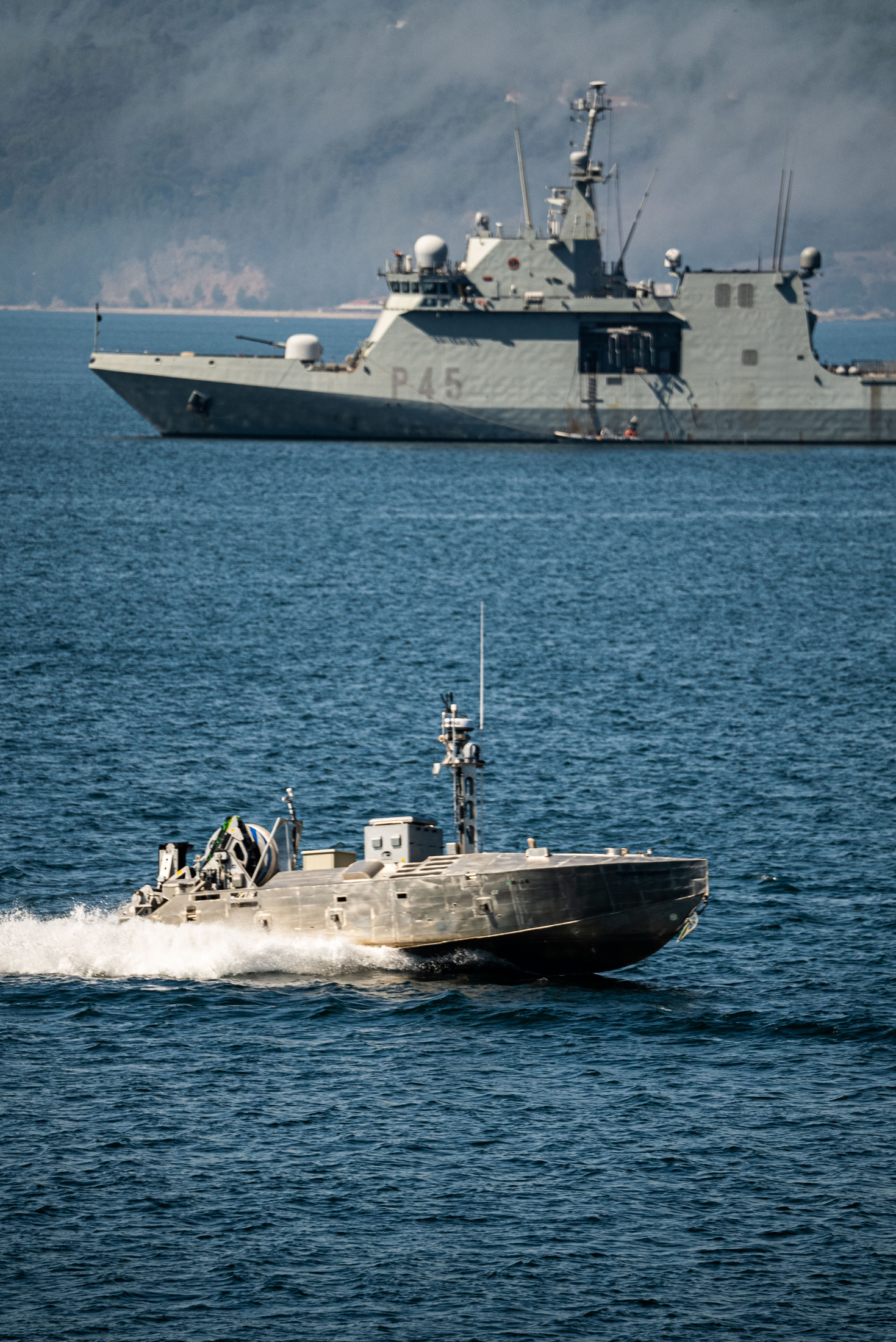Striking Precision in Baltic Sea Operation: Unmanned Warfare Transforms Naval Engagements

Striking Precision: Unmanned Warfare Showcased in Baltic Sea Operation
Coordinated Strike Demonstrates Modern Naval Power
A recent maritime operation set in the Baltic region captured global attention due to its seamless integration of advanced technology and real-time tactical execution. Personnel executed an exercise focusing on eliminating a simulated opposing vessel through the synchronized use of airborne and maritime robotics. Central to the activity, an aerial system delivered a decisive impact, paving the way for an autonomous surface vessel to move in and ensure total target neutralization.
The event was meticulously documented from above by an eye-in-the-sky platform, offering unbiased verification of both the initial precision hit and the follow-up maritime incursion. Throughout the maneuver, live feeds enabled observers to evaluate the effectiveness and speed of both aerial and maritime assets as they collaborated under challenging operational conditions. Interestingly, the operator commanding the surface vehicle, identified by the moniker “Tourist”, reported reliable connectivity and vessel control even under conditions intended to simulate hostile interference via electronic countermeasures.
Technological Collaboration Sets New Standards
The operation unfolded as part of a sweeping training campaign in which various types of platforms—including aerial assets, patrol vessels, and surface robotics—collaborated across multiple theaters. This demonstration of synchronized remote-operated weaponry reflects a growing emphasis on hybridized naval tactics where different robotic units can cover each other’s operational limitations and magnify mission success. This joint deployment model removes much of the risk typically associated with conventional forces, leveraging the strengths of advanced munitions for the first critical blow and unmanned maritime platforms to finish the task.
The airborne strike instrument, notable for its agility and target-seeking capability, was chosen for its ability to close the gap between surveillance and attack with minimal latency. Once a direct impact was confirmed, the follow-up craft executed its own role, proving that surface robots are not simply support units but active agents in the engagement process. Robust telemetry and footage validated by an independent aerial observer remain vital not only for post-mission analysis but also for real-time verification, accountability, and tactical adjustment.
Readiness Enhanced by Integration and Innovation
This sequence of actions was embedded in a wider context—an international military undertaking intended to test rapid adaptation, integration of precision-guided munitions, and advanced defense systems. The array of participating units exemplified the ongoing drive to fuse unmanned and manned platforms within the same operational theater. Organizers cited the ability to perform complex, non-traditional missions and stress-test hardware against plausible sources of signal disruption as guiding priorities.
That emphasis on readiness for unconventional situations was a direct test for modern tempo and complexity. By melding multiple classes of hardware across air, sea, and remote surface domains, the planners displayed not only sheer technological capability but also a willingness to experiment with new combinations of assets. Each segment of the operation—airborne strike, maritime follow-through, persistent surveillance—played a distinct, optimized role, highlighting the doctrine shift towards distributed, heavily networked, and unmanned warfare in coastal environments.
Pivotal Moments and Lasting Implications
Several pivotal moments stood out: the real-time confirmation of the initial hit, the seamless handoff from aerial to surface phase, and the consistent command-and-control links even amid simulated attempts at electronic disruption. The ability of the surface vessel to operate unimpeded under such conditions reflected substantial progress in technology designed to resist signal degradation. This capability is crucial in contested maritime zones, where electronic warfare is increasingly a factor.
Such displays not only serve training purposes but also signal operational maturity in adopting unmanned solutions. They offer concrete evidence of how remote-operated vehicles can fundamentally transform engagement protocols and multiply force effectiveness. The interplay of advanced platforms, each specializing in some stage of the operation—detection, strike, assessment, and completion—confirms a trend toward diversified, resilient maritime strategies tailored for the contemporary security landscape.
Conclusion: The Future Has Arrived
The Baltic region operation provided a glimpse into the evolving dynamics of maritime security, showcasing not just technical competence but also the flexibility and reliability of modern remote warfare assets. Every milestone—precision delivery, redundancy in destruction, robust control amidst interference—demonstrated the ongoing transformation in force projection. As integration deepens, the edge provided by unmanned assets is poised to redefine limits and shape future exercises, signaling that hybrid operations leveraging both air and sea robotics have transitioned from concept to operational reality.
